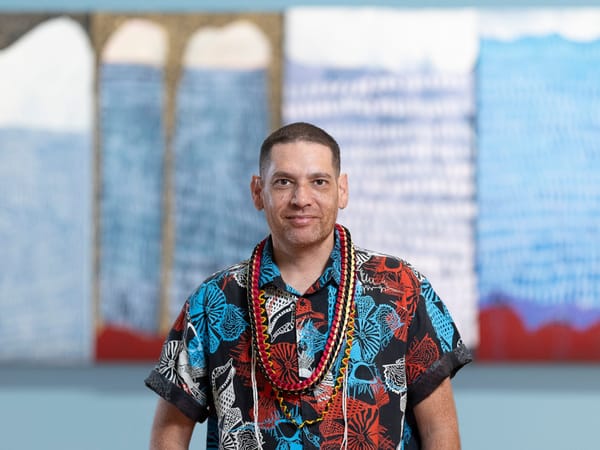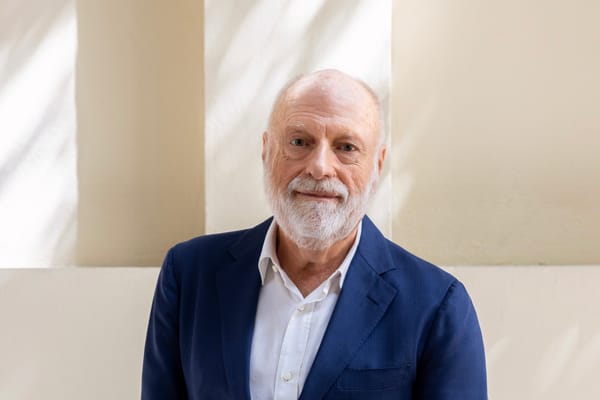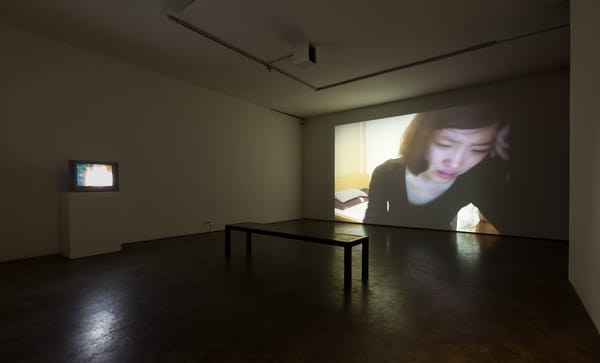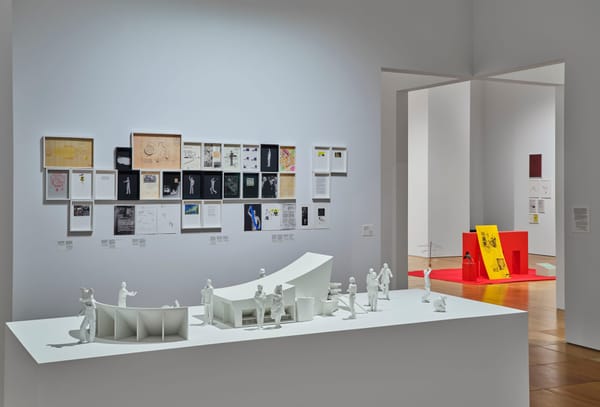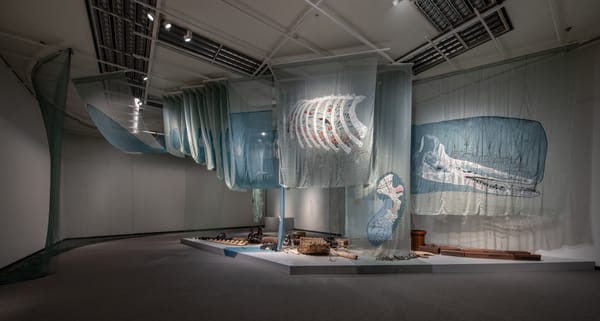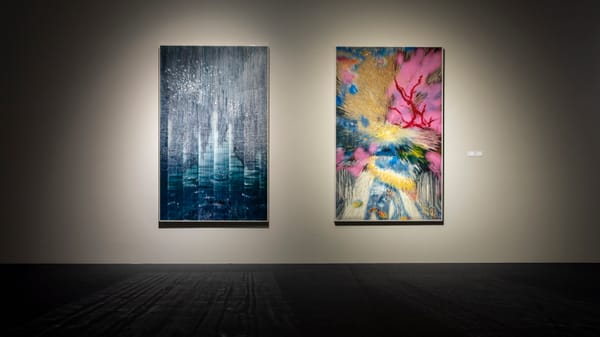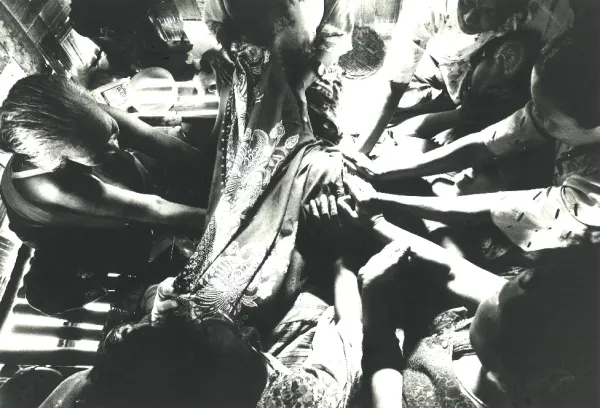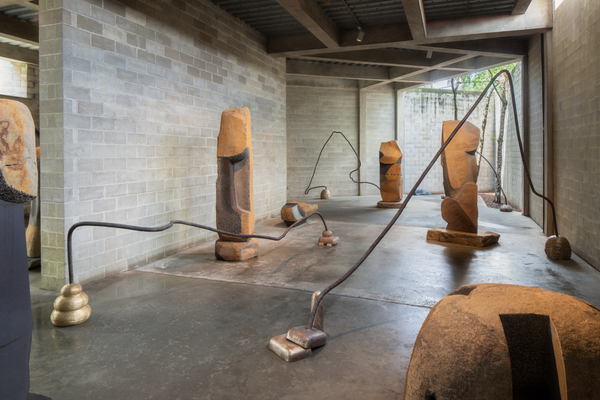Shows
Choreographing Desire: “Ballet with the Devil” at Podium Gallery
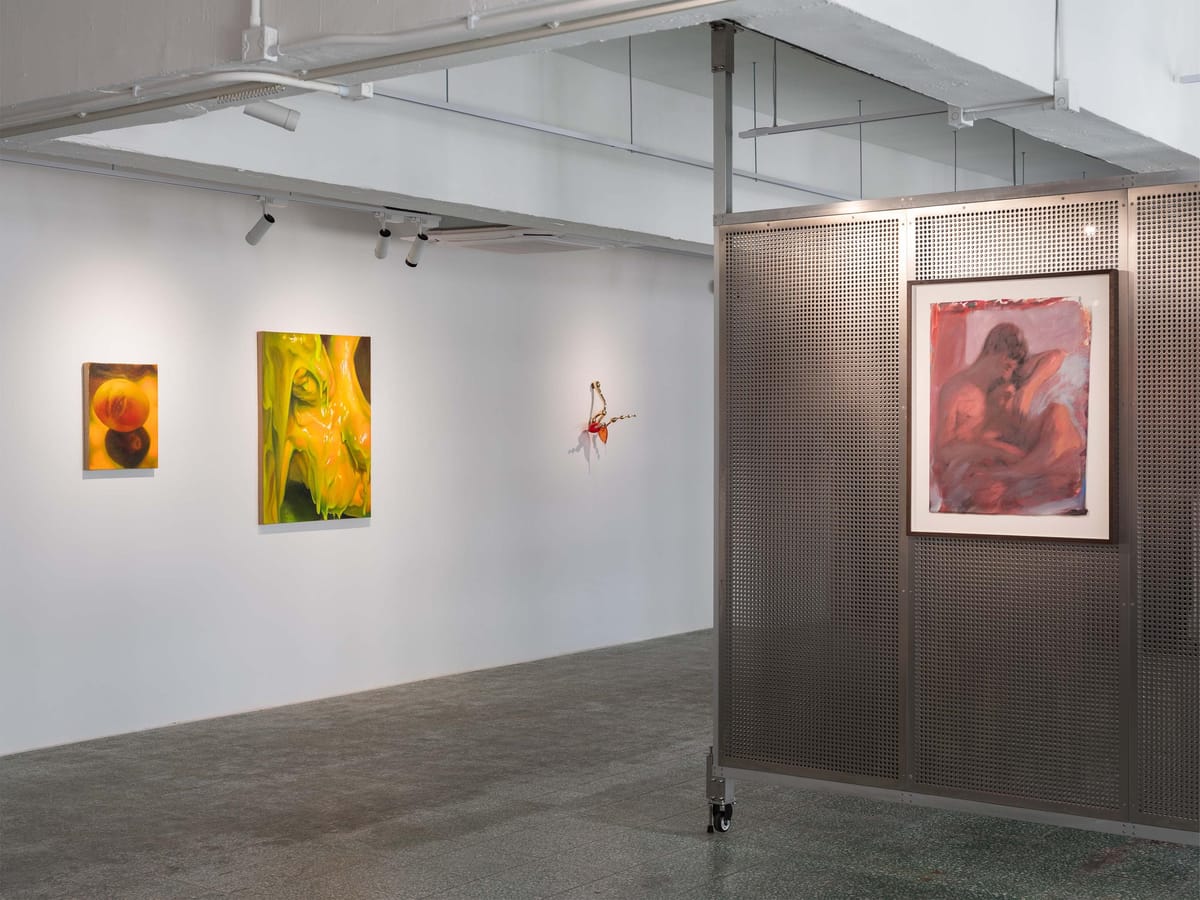
Ballet with the Devil
Podium Gallery
Hong Kong
Jun 7–Aug 16, 2025
The summer group show at Hong Kong’s Podium gallery, “Ballet with the Devil,” explored the entanglements of desire and subjectivity through a range of paintings and installations. While psychoanalytic theory often conceptualizes yearning in relation to absence and lack, casting it as a compulsive drive that overwhelms a passive subject, the exhibition offered an alternative reading. Here, artists reframed desire as a liminal zone pulsing with precarity and becoming—one that fosters subversion, agency, and transcendence
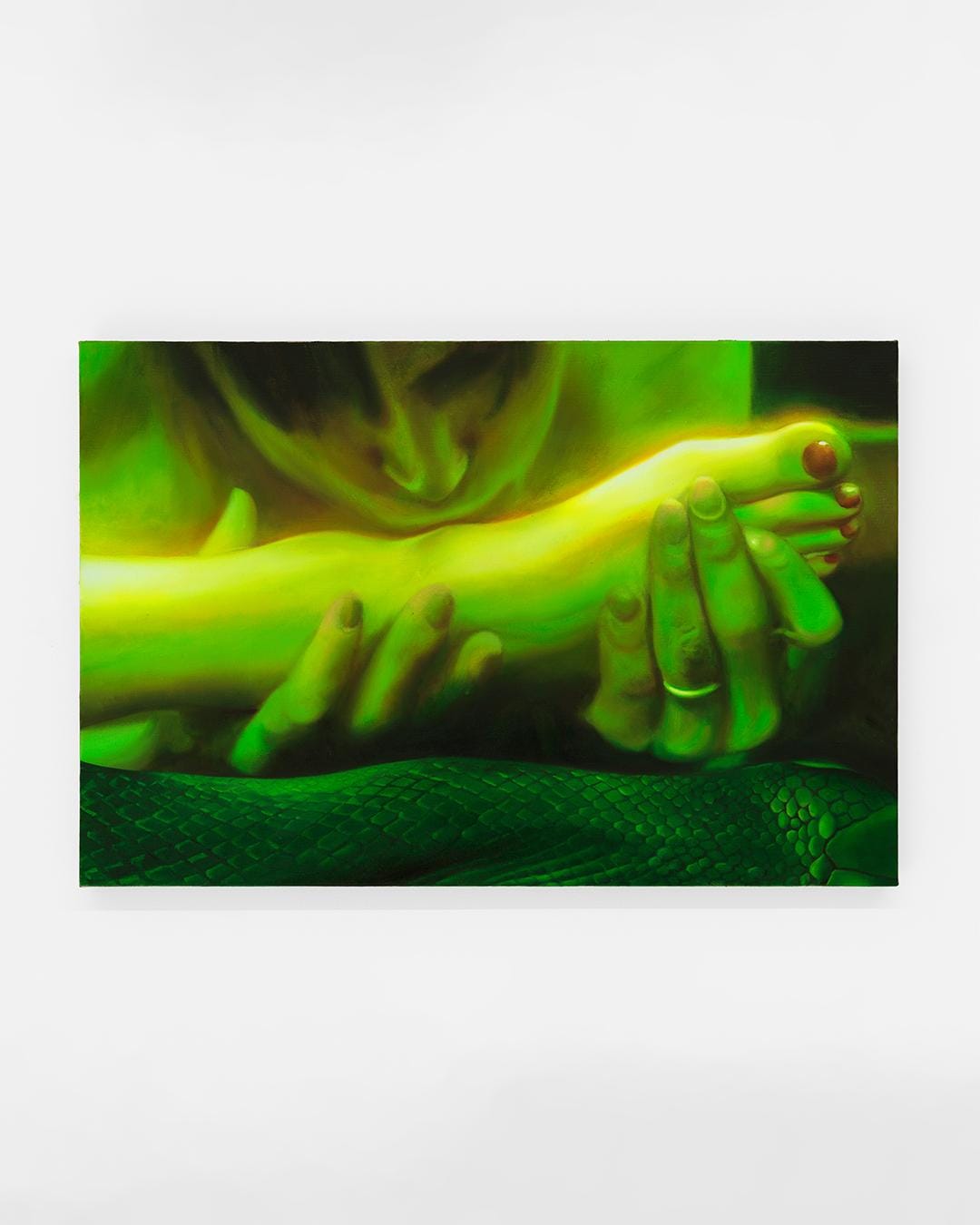
At the gallery entrance, viewers encountered Tao Siqi’s oil painting Savoring (2025), its lurid neon green palette intensified by the cold gleam of the stainless-steel wall panels behind it. The work depicts a foot with blood-red painted toenails being gently caressed and kissed by an androgynous figure who wears a wedding ring, while a serpent coils along the bottom of the canvas, evoking the biblical temptation of Eve. The cinematic close-up of limbs and the individual’s face—in conjunction with the snake (an emblem of deceit, temptation, and infidelity) and the ring (a symbol of marital love and devotion)—creates a scene of erotic tension and unease, where desire is dismembered, refracted, and suspended in ambivalence.
References to the Edenic myth continued in Korean artist Dew Kim’s metal and blown glass installations. In One Whispered Pleasure, the Other Promised Pain (2025), Kim reconfigured bud-like anal beads and phallic sex toys into gold-plated brass sprigs, alluding to the Tree of Knowledge. A crimson, bulbous form made of glass is slumped over one outstretched branch, with what appears to be a viscous, translucent liquid trickling down its tip, recalling both a used condom and the enticing forbidden fruit. By synthesizing these sexual and biblical motifs, the work subverts age-old, hegemonic taboos surrounding lust and sensuality through a queer lens. Rather than restating Eve’s deed of eating the apple as the origin of sin, Kim’s piece reframes it as an emancipatory pursuit of pleasure and knowledge that has historically been denigrated as an act of immorality by organized religion and patriarchal authority. This reimagined act of defiance parallels Kim’s own effort to unveil queer and masochistic desire, often vilified and censured by conservative South Korean society.
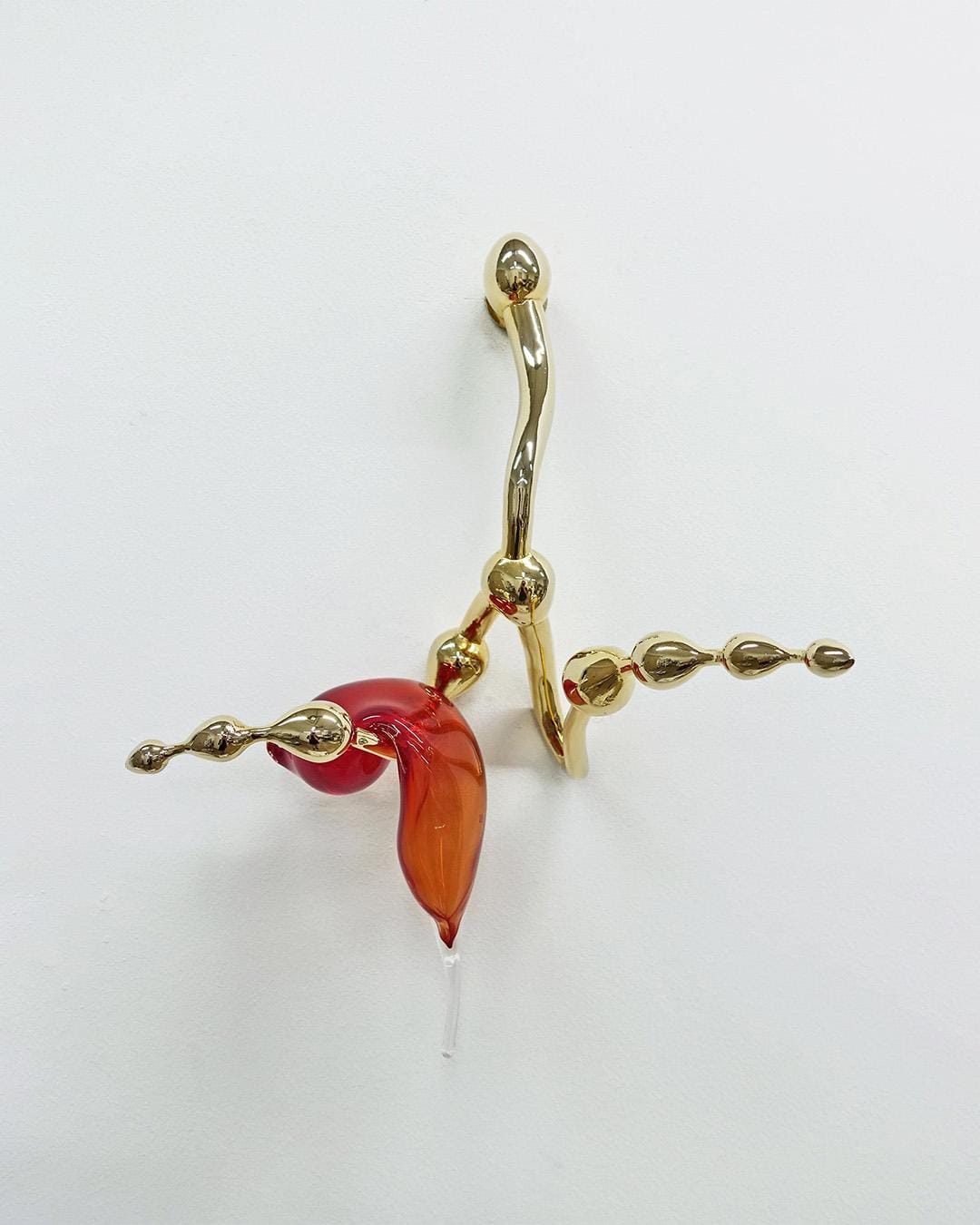
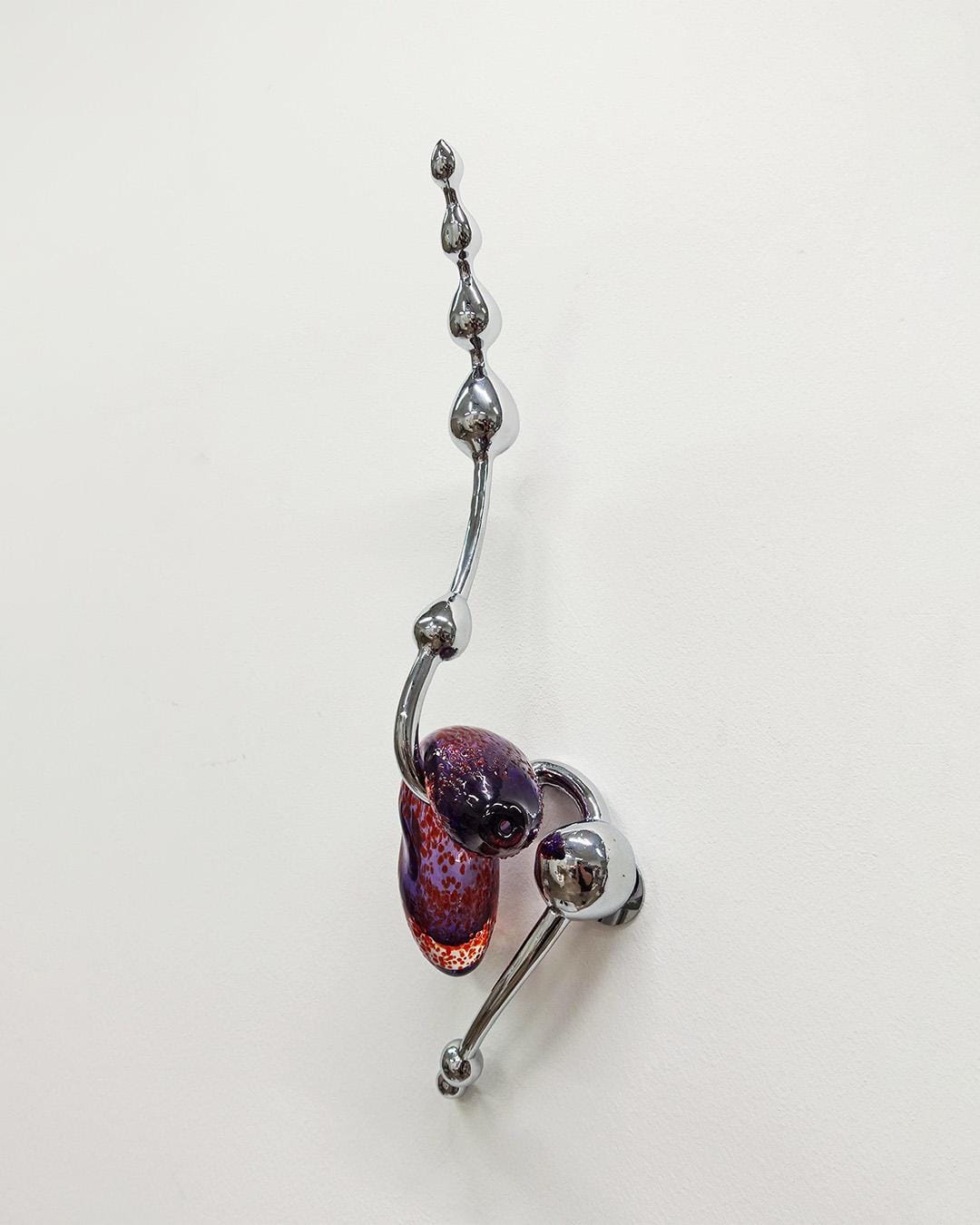
DEW KIM, One Whispered Pleasure, the Other Promised Pain, 2025, gold-plated brass, blown glass, 35 x 35 x 27 cm (left); and They Swallowed the Serpent and Called It Prayer, 2025, chrome-plated brass, blown glass, 55 x 15 x 13 cm (right). Courtesy Podium Gallery, Hong Kong.
This interplay between desire and sexuality further unfolded in the works of Portuguese painter João Gabriel and Korean artist Jaewon Kim. Gabriel’s oil-on-paper pieces reference gay pornographic imagery from the pre-AIDS 1970s, depicting nude male figures in tender companionship or pensive solitude, their features smudged and contours blurred. The slightly tattered edges in each piece are a subtle nod to pages torn from vintage homoerotic magazines that were circulated within queer communities at the time. Gabriel’s vivid chiaroscuro and delicate, wispy brushstrokes limn a melancholic reverie, resurrecting a bygone age of vibrant gay culture marked by sexual liberation and communal intimacy, before the AIDS epidemic cast its long shadow.
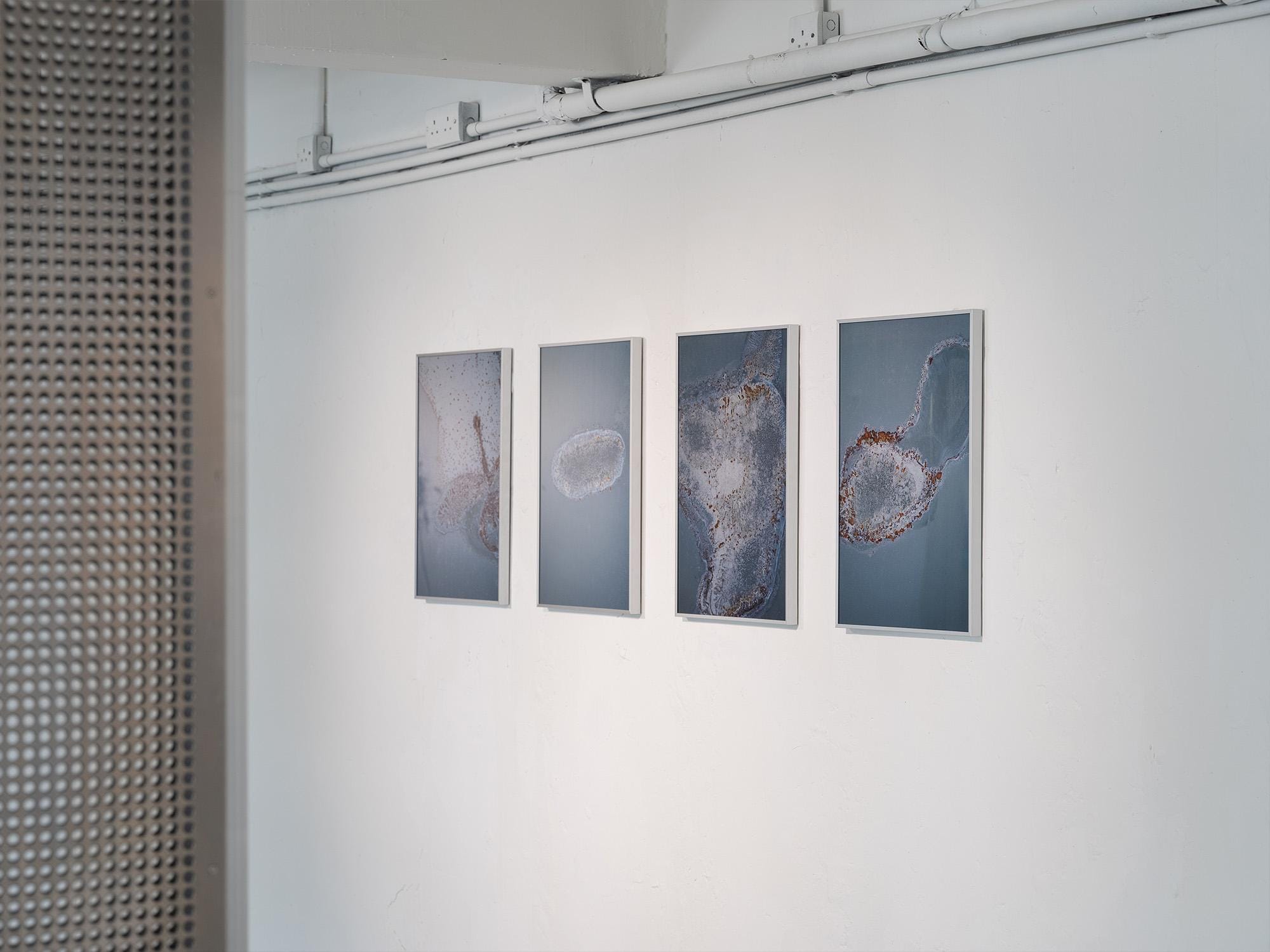
In contrast to Gabriel’s pre-AIDS nostalgia, Jaewon Kim’s print series, titled Lingering State I-IV (2025), summons the haunting aftermath of the crisis. The snapshots portray magnified surfaces of corroded metal plates, whose oxidized red speckles against a dust-blue backdrop resemble bird’s-eye views of remote islands as well as clinical snapshots of microorganisms. Though composed of inert, inorganic material, these forms visually conjure up living pathological cells, encapsulating Kim’s ongoing exploration of how HIV/AIDS continues to shape the contemporary LGBTQ+ experience. The pairing of Gabriel’s sentimental figurative paintings with Kim’s dispersed, cellular prints offered a compassionate look at queer desire mediated by the complex history and enduring cultural impact of AIDS.
“Ballet with the Devil” invited viewers to unabashedly gaze into, and dance with, desire. By intertwining the oft-restrictive narratives of ancient biblical mythology and heteronormative society with queer resilience and collective memory, each artist reinterpreted the past and articulated new visual languages for expressing desire, sexuality, and queerness in the present moment.
Stella Wu is an editorial intern at ArtAsiaPacific.
